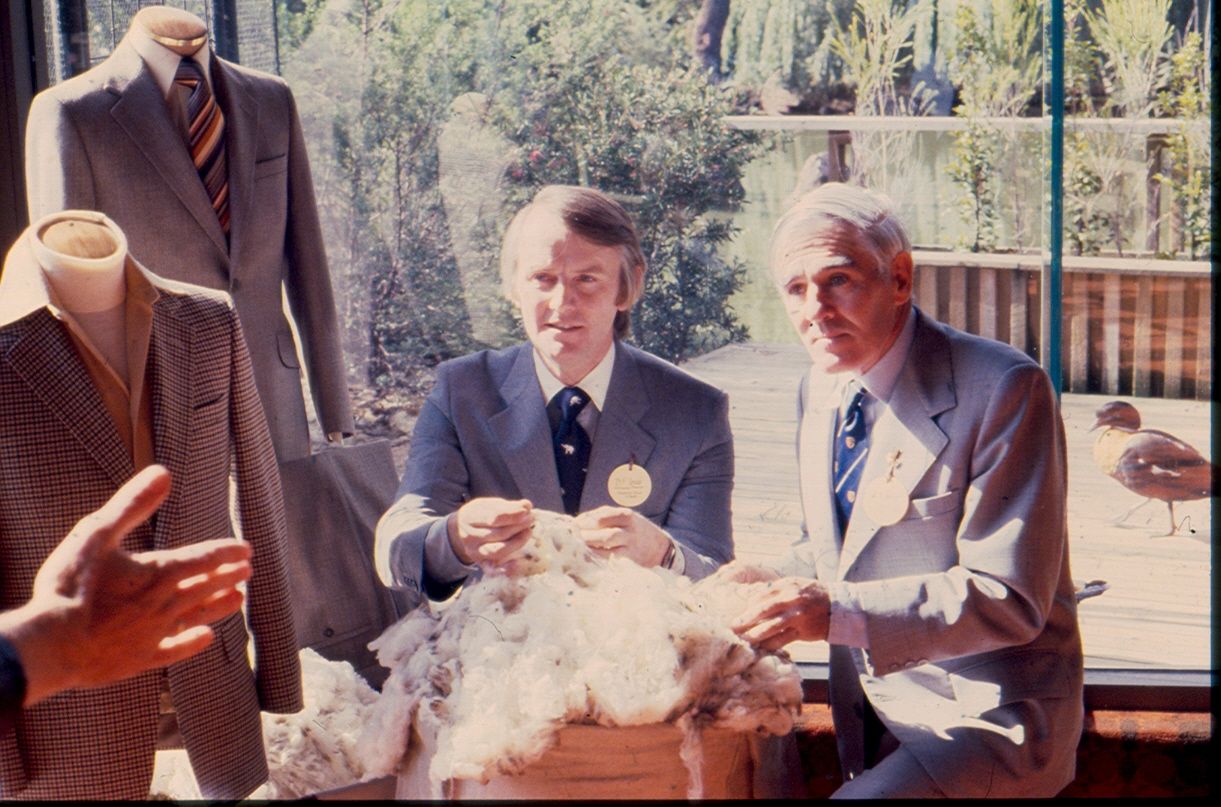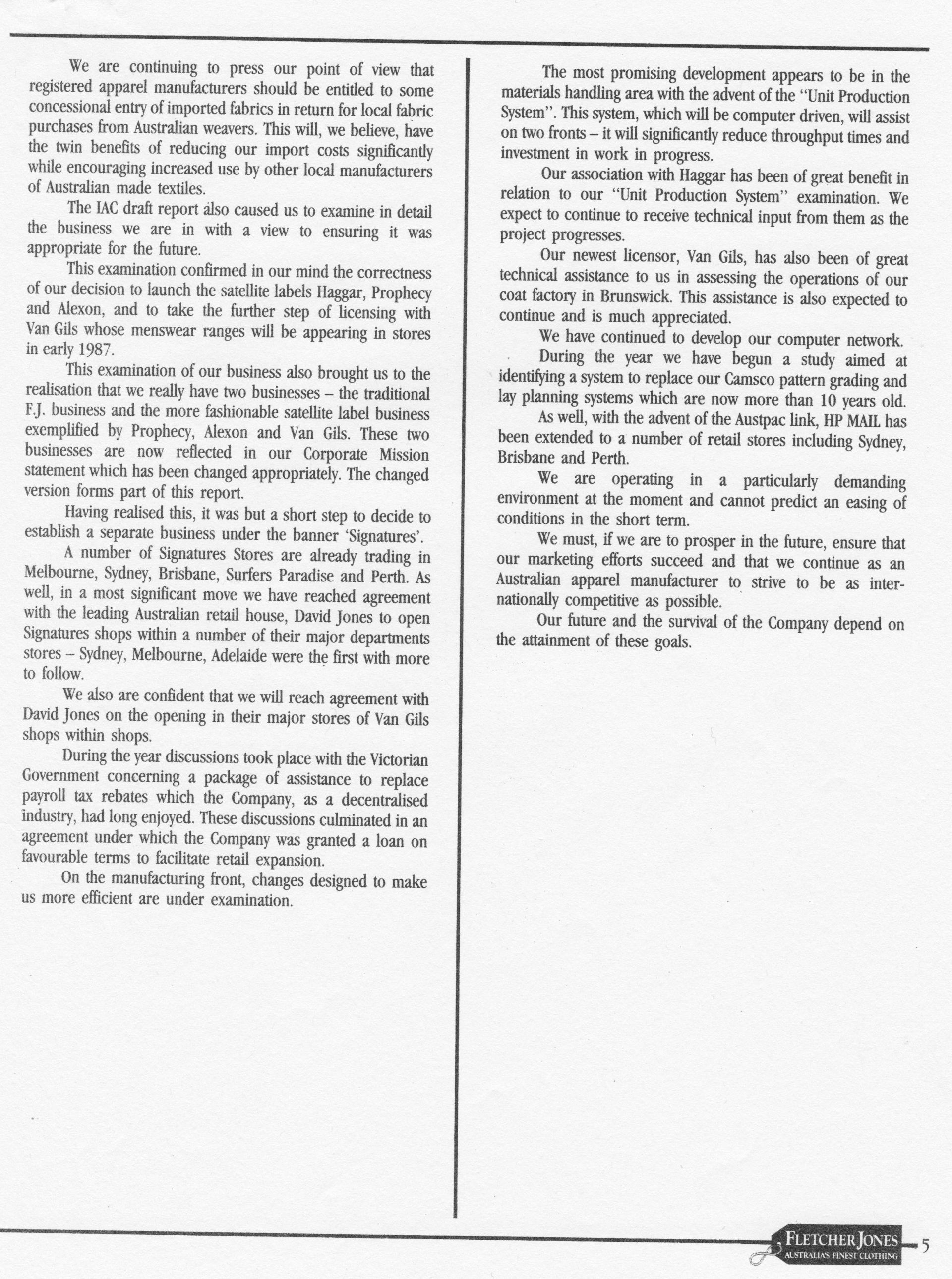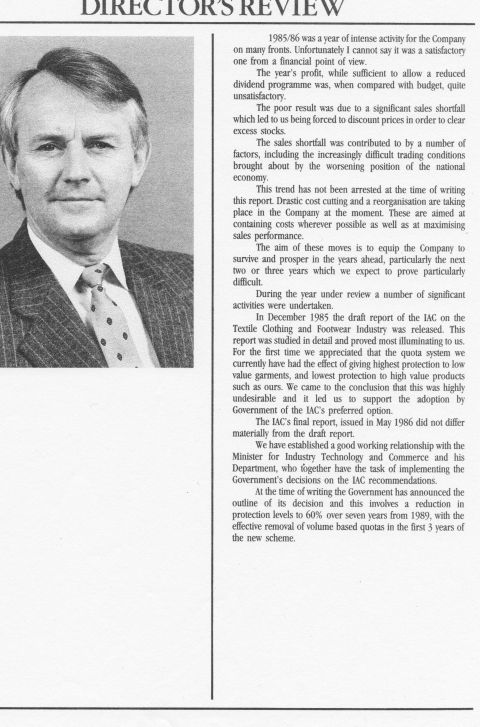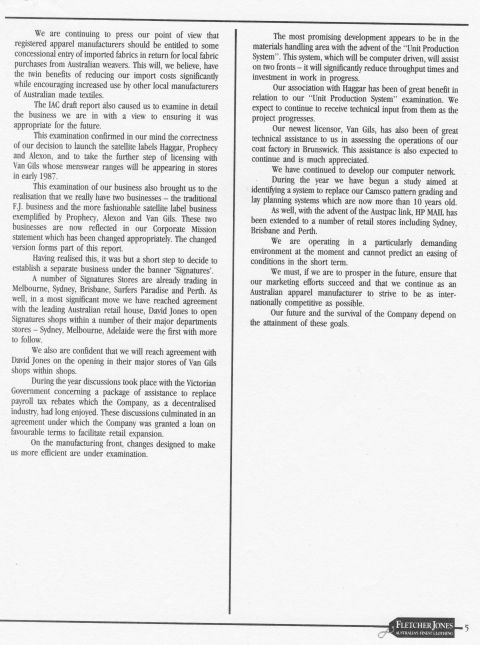Throughout the 1960s FJs was busily establishing shops and factories, which spread into five states. The company's business continued to fly into the 1970s but the impact of inflation was starting to take its toll. In 1973-74, rising costs meant that for the company to maintain the same volume of trading stock at the end of the year as it held at the start, it needed an investment far greater than its total subscribed capital.
FJs made its first trading loss in 1978-79 before the signs of a corporate descent emerged in the 1980s and by the mid 1980s; the FJ Company was starting to struggle. Significant sales shortfalls led the company to discount prices in order to clear excess stocks.
In 1986, Australia's Industrial Relations Commission recommended to the Federal Government that unless massive re-structuring took place, the textile, clothing and footwear industries in Australia would be vulnerable to cheaper imported products from overseas. The Industries Assistance Commission (IAC) warned that industries could no longer expect the protection of quotas on imports. In response to the IAC moves, Fletcher Jones looked at introducing new products, some imported, in a bid to maintain its competitive edge. The speed of change in this area might have been a telling factor in the company's downhill slide. (excerpt from article in the Warrnambool Standard December 19, 1992 weekend magazine: Lower Tariffs Strangle Pioneering Survivor of Depression and War).
In 1986, the Victorian Government gave the company an unsecured $2.5million loan. "Under the Fletcher Jones agreement struck on June 24, 1986, the Victorian Economic Development Corporation (VEDC) issued an unsecured $2.5million loan to the company that was to be repaid on June 30, 2006. The company was to be charged no interest on the loan provided factory employment in Victoria remained over 750.
"We are operating in a particularly demanding environment at the moment and cannot predict an easing of conditions in the short term." "Increasingly difficult trading conditions," with a national economy moving to recession and looming changes to end protective tariffs saw the company launch satellite labels with two U.S. based firms Haggar (trouser range for men) and Prophecy (smart street causal range for women) and British based Alexon (softly tailored women's wear range designed in Britain).
"The examination of our business also brought us to the realisation that we really have two businesses - the traditional FJ business and the more fashionable satellite label business exemplified by Prophecy, Alexon and Van Gils. These two businesses are now reflected in our Corporate Mission statement which has been changed appropriately.... Having realised this, it was but a short step to decide to establish a separate business under the banner 'Signatures'. David Jones, Managing Director's Review 1985/86.





